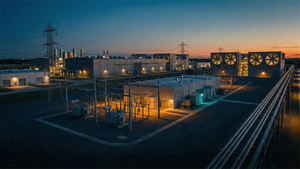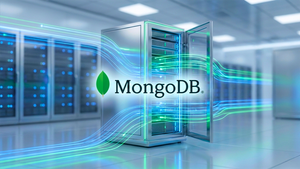The "The Global Sustainable Enzymes Market 2026-2036" report has been added to ResearchAndMarkets.com's offering.
The Global Sustainable Enzymes Market 2026-2036 provides critical insights into the global sustainable industrial enzymes market. As artificial intelligence revolutionizes enzyme design and enzymatic recycling emerges as a game-changing solution to plastic waste, understanding market dynamics, technological innovations, and competitive landscapes becomes essential for stakeholders across biotechnology, chemical manufacturing, textiles, food processing, and waste management sectors.
The sustainable enzymes market represents one of the most dynamic and rapidly growing segments within industrial biotechnology. This market encompasses industrial enzymes specifically developed and applied to reduce environmental impact, enable circular economy models, and replace harmful chemical processes across manufacturing sectors. Sustainability concerns are fundamentally reshaping industrial enzyme demand.
The report provides exhaustive analysis of sustainable enzyme applications spanning detergents, food and beverage processing, textile manufacturing, biofuels production, pharmaceutical development, and the rapidly emerging enzymatic recycling sector. Special emphasis is placed on breakthrough technologies including AI-driven enzyme discovery, cell-free biomanufacturing systems, and enzymatic depolymerization of plastics and textiles - innovations that are fundamentally reshaping circular economy approaches and enabling virgin-quality material recovery from post-consumer waste streams.
With growing regulatory pressure for sustainable manufacturing, carbon emission reduction targets, and circular economy mandates, enzymes offer compelling advantages: 50-70% energy savings compared to chemical processes, 40-60% water consumption reduction, elimination of toxic chemical waste, and significantly lower carbon footprints. This report examines how these sustainability drivers are accelerating enzyme adoption across industries while analyzing the complex regulatory landscape, particularly the evolving recognition of enzymatic recycling as an official recycling pathway in key markets including the European Union, Germany, United States, and Asia-Pacific regions.
Market segmentation analysis covers enzyme types (carbohydrases, proteases, lipases, cellulases, amylases), sources (microbial, plant, animal), forms (liquid, powder, granular), and applications across ten major industrial sectors. Detailed revenue forecasts through 2036 quantify growth opportunities while identifying emerging applications in plastic degradation, textile recycling, and bio-based chemical production that represent the highest-growth segments.
The competitive landscape section profiles 84 leading companies and innovative startups driving sustainable enzyme innovation, from established multinational corporations to venture-backed biotechnology pioneers. Analysis encompasses technology platforms, production capabilities, strategic partnerships, funding rounds, and market positioning, providing decision-makers with actionable intelligence on competitive dynamics and potential collaboration opportunities.
Technology deep-dives examine protein engineering, directed evolution, metagenomic enzyme discovery, computational design using generative AI and machine learning, enzyme immobilization techniques for enhanced reusability, and integration of digital technologies with bioprocessing. Special sections address scale-up challenges, infrastructure development requirements, and capital investment considerations for moving technologies from laboratory to commercial production - critical factors determining market entry success and competitive advantage.
Report contents include:
- Executive summary of sustainable enzymes market dynamics and growth projections
- Comprehensive analysis of industrial biomanufacturing processes and classifications
- Detailed market drivers, restraints, and regulatory landscape across major regions
- Breakthrough technological advancements: AI-driven enzyme design, enzymatic recycling, cell-free systems
- In-depth applications analysis across 10 industrial sectors with enzyme type specifications
- Competitive landscape and strategic positioning of 84 key players and emerging innovators
- Global revenue forecasts 2026-2036 segmented by application, type, source, and form
- Price trend analysis and forecast through 2036
- Infrastructure investment requirements and scale-up challenges
- Circular economy integration strategies and sustainability metrics
- 33 detailed data tables and 9 illustrative figures
Key Topics Covered:
1 EXECUTIVE SUMMARY
1.1 Industrial Biomanufacturing
1.2 Industrial Biomanufacturing Processes
1.3 Sustainable Industrial Enzymes Markets
1.4 Importance of Enzymes in Modern Industry
1.5 Market Drivers
1.6 Market Restraints
1.7 Industry Value Chain
1.8 Regulatory Landscape
1.8.1 Overview
1.8.2 Regulatory Recognition of Emerging Enzyme Applications
1.8.2.1 Enzymatic Recycling Regulatory Status
1.8.2.2 Policy Evolution and Positive Signals
1.8.2.3 Expected Regulatory Developments
1.8.2.4 Impact on Market Development
1.8.2.5 Broader Policy Implications
1.9 Technological Advancements and Emerging Applications in Industrial Enzymes
1.9.1 Protein Engineering and Directed Evolution
1.9.2 Metagenomic Approaches
1.9.3 Enzyme Immobilization Techniques
1.9.3.1 Immobilization for Enzymatic Recycling Applications
1.9.3.2 Emerging Immobilization Technologies
1.9.4 Computational Enzyme Design
1.9.4.1 Generative AI and Deep Learning Models
1.9.4.2 Integration with Experimental Data
1.9.4.3 Advanced Computational Techniques
1.9.4.4 Applications and Impact
1.9.4.5 Challenges and Future Directions
1.9.5 Pharmaceutical and Biotechnology Industries
1.9.6 Cosmetics and Personal Care
1.9.7 Bioremediation
1.9.8 Nanotechnology
1.9.9 3D Bioprinting
1.9.10 Enzymatic Recycling and Circular Materials
1.9.10.1 Plastic and Polyester Recycling
1.9.10.2 Textile Recycling Applications
1.9.10.3 Applicable Polymer Types
1.9.10.4 Process Technology
1.9.10.5 Environmental and Economic Benefits
1.9.10.6 Design for Circularity
1.9.10.7 Industry Adoption
1.9.10.8 Challenges and Development Needs
1.10 Sustainability and Environmental Considerations for Industrial Enzymes
1.10.1 Role of Industrial Enzymes in Sustainable Production
1.10.2 Life Cycle Assessment of Enzyme Production
1.10.3 Circular Economy Initiatives in the Enzyme Industry
2 INTRODUCTION
2.1 Classification of industrial enzymes
2.2 Types of Industrial Enzymes
2.2.1 Carbohydrases
2.2.2 Proteases
2.2.3 Lipases
2.2.4 Cellulases
2.2.5 Amylases
2.2.6 Others
2.3 Production Methods
2.3.1 Extraction from Plant and Animal Sources
2.3.2 Microbial Fermentation
2.3.3 Genetically Engineered Organisms
2.3.4 Cell-Free Enzyme Systems
2.3.4.1 Cell-Free Enzyme Production
2.3.4.2 Cell-Free Biocatalysis
2.3.4.3 Commercial Applications
2.3.4.4 Process Integration
2.3.4.5 Comparison with Precision Fermentation
3 INDUSTRIAL ENZYMES MARKET
3.1 Technology/materials analysis
3.1.1 Detergent Enzymes
3.1.2 Food Processing Enzymes
3.1.3 Textile Processing Enzymes
3.1.4 Paper and Pulp Processing Enzymes
3.1.5 Leather Processing Enzymes
3.1.6 Biofuel Production Enzymes
3.1.7 Animal Feed Enzymes
3.1.8 Pharmaceutical and Diagnostic Enzymes
3.1.9 Waste Management and Bioremediation Enzymes
3.1.10 Agriculture and Crop Improvement Enzymes
3.2 Market analysis
3.2.1 Key players and competitive landscape
3.2.2 Market Growth Drivers and Trends
3.2.3 Future outlook
3.2.4 Risks and Opportunities
3.2.5 Pricing
3.2.5.1 Pricing Trends
3.2.5.2 Factors Affecting Pricing
3.2.5.3 Price Forecast
4 GLOBAL REVENUES
4.1 By application market
4.2 By type
4.3 By source
4.4 By form
5 COMPANY PROFILES (84 COMPANY PROFILES)
- AgBiome
- Agrivida
- Amano Enzyme Inc.
- Aminoverse
- Anodyne Chemistries
- Ansa Biotechnologies
- Apexzymes
- Arctos
- Arzeda
- Atantares
- Basecamp Research
- BASF
- Bio Fab NZ
- BioBetter
- Biocatalysts Ltd.
- BioMap
- Biomatter
- Biosyntia
- Cambrium GmbH
- Carbios
- Cascade Biocatalysts Inc.
- CinderBio
- Clariant AG
- Codexis
- Constructive Bio
- Debut Biotechnology
- Diffuse Bio
- DSM-Firmenich
- Dupont
- Eco Fuel Technology Inc.
- Elemental Enzymes Inc.
- EnginZyme AB
- EnPlusOne Biosciences
- Enzyan Biocatalysis GmbH
- Enzymaster
- Enzyme
- Enzymicals AG
- Enzymit
- Epoch Biodesign
- Ester Biotech
- Etcembly
- Eversyn
- eXoZymes Inc.
- FabricNano
- Futurity Bio-Ventures Ltd.
- Gen3Bio
- General Biological
- Ginkgo Bioworks
- Global Bioenergies SA
- Honext Material SL
- HydGene Renewables
- Immobazyme
- Imperagen Limited
- Iogen Corporation
- Johnson Matthey
For more information about this report visit https://www.researchandmarkets.com/r/nw1ku3
About ResearchAndMarkets.com
ResearchAndMarkets.com is the world's leading source for international market research reports and market data. We provide you with the latest data on international and regional markets, key industries, the top companies, new products and the latest trends.
View source version on businesswire.com: https://www.businesswire.com/news/home/20251120486277/en/
Contacts
ResearchAndMarkets.com
Laura Wood, Senior Press Manager
press@researchandmarkets.com
For E.S.T Office Hours Call 1-917-300-0470
For U.S./ CAN Toll Free Call 1-800-526-8630
For GMT Office Hours Call +353-1-416-8900




